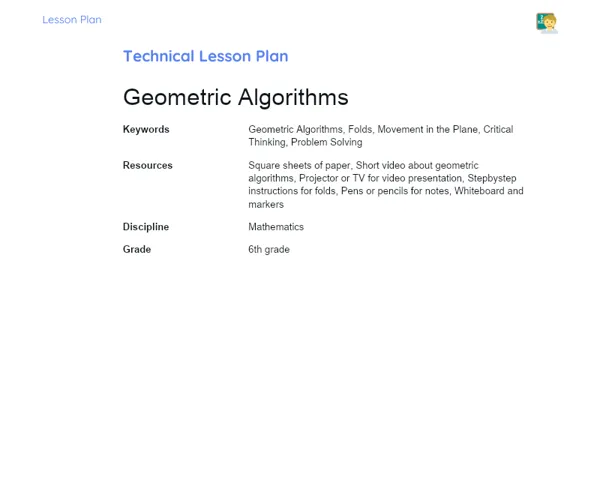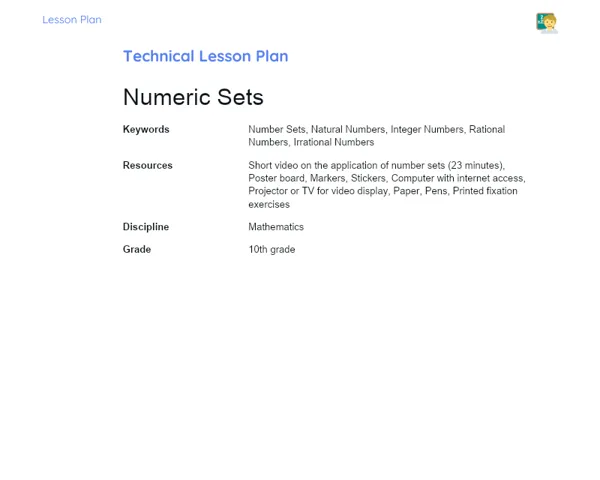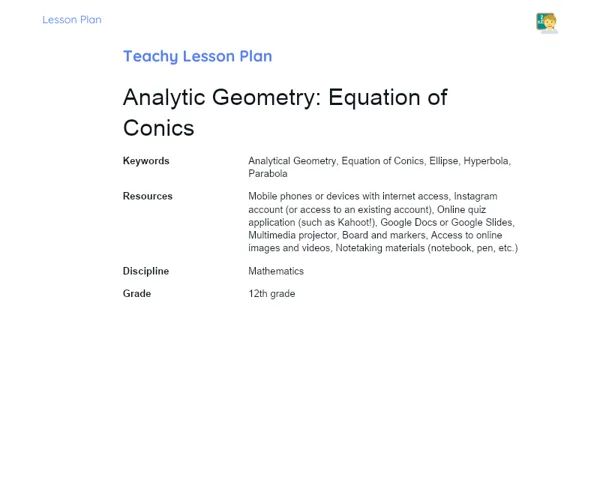Lesson Plan | Active Methodology | Comparisons between fractions
| Keywords | Fractions, Fraction Comparison, Practical Activities, Contextualization, Teamwork, Group Discussion, Real Application, Problem-Solving Strategies, Order of Fractions, Collaborative Learning |
| Necessary Materials | Shopping lists with fractions, Cards illustrating pizza cuts, Building blocks of various sizes, Activity copies for groups, Materials for note-taking, Sufficient space for group activities |
Premises: This Active Lesson Plan assumes: a 100-minute class duration, prior student study both with the Book and the beginning of Project development, and that only one activity (among the three suggested) will be chosen to be carried out during the class, as each activity is designed to take up a large part of the available time.
Objective
Duration: (5 - 10 minutes)
Setting clear objectives is vital for establishing what learners should achieve by the end of the lesson. By detailing the main objectives, the educator steers the learners' focus towards the specific skills being tackled. This guidance helps shape the learning activities and ensures that all efforts align with the educational goals. Furthermore, linking objectives to real-life situations, such as comparing fractions of quantities, helps learners appreciate the relevance and significance of mathematical concepts in their everyday lives.
Objective Utama:
1. Empower learners to compare fractions of whole quantities, such as half of 50 and a third of 60, identifying which fraction is larger and sorting them in ascending or descending order.
2. Develop the ability to apply the concept of fractions in practical contexts, enhancing the understanding of how fractions function in everyday situations.
Objective Tambahan:
- Encourage learners' active involvement in identifying strategies for solving fraction-related problems.
- Promote collaboration among learners during practical activities to reinforce learning through discussion and teamwork.
Introduction
Duration: (20 - 25 minutes)
The introduction phase aims to engage learners from the get-go, using problem situations they might encounter in their lives. This activates prior knowledge, preparing them to apply these concepts in more complex and realistic scenarios. Contextualizing with practical examples reinforces the importance of the topic, bridging the gap between theoretical learning and real-world application, thus sparking interest and highlighting the subject's relevance.
Problem-Based Situation
1. Imagine you're planning a birthday celebration and need to buy ingredients for a cake. You have two recipes: one that requires 1/2 cup of sugar and another that calls for 1/3 cup of chocolate. How do you compare these amounts to ensure the cake is just sweet enough?
2. A farmer has 100 apples and wants to share them equally among three families. He decides to use baskets, but each basket must contain an equal number of apples. If he uses 2/3 of the apples, how many apples does each family get? How does this compare if he used 1/4 of the apples?
Contextualization
Fractions are a part of daily life, from sharing a pizza among friends to calculating discounts at the shops. Exploring fractions in familiar context helps learners see the topic's significance. For instance, when adjusting recipes for more or fewer guests or at events where giveaways need to be divided equally. Additionally, understanding how to compare fractions empowers informed decision-making, like choosing the best deals at a grocery store or interpreting financial summaries.
Development
Duration: (75 - 80 minutes)
The Development phase allows learners to apply and deepen their prior knowledge of fractions within a practical and collaborative environment. Activities are structured for group work, fostering discussion and joint problem-solving, which not only reinforces learning but also cultivates social and communication skills. Each activity is intentionally crafted to be both challenging and enjoyable, keeping students engaged and eager to explore the world of fractions.
Activity Suggestions
It is recommended that only one of the suggested activities be carried out
Activity 1 - The Market of Fractions
> Duration: (60 - 70 minutes)
- Objective: Develop skills in comparing and ordering fractions in a practical, fun context, promoting teamwork and decision-making.
- Description: Learners will work in groups of up to 5, taking on the role of shop managers. Each group will receive a shopping list from five customers, with each item requested in different fractions. The challenge is to compare these fractions and determine who gets the largest portion of each item based on the fractions.
- Instructions:
-
Split the class into groups of up to 5 learners.
-
Provide each group with the shopping list containing the requested fractions.
-
Learners must calculate and compare the fractions for each item on the list.
-
Once compared, each group must decide who receives the biggest portion.
-
Each group will present their choices and justify their reasoning to the class.
Activity 2 - Pizza Fractions Party
> Duration: (60 - 70 minutes)
- Objective: Apply the concept of fractions in a fair division of quantities in a real-life context (playful activity), enhancing mathematical reasoning and communication among learners.
- Description: In this activity, learners will plan a pizza party for 15 guests, ensuring each pizza is cut into equal fractions so everyone gets a fair slice. They will compare various cutting options to guarantee each guest receives an equitable share of the pizza.
- Instructions:
-
Organise learners into groups of no more than 5.
-
Introduce the pizza party scenario for 15 guests.
-
Each group receives cards representing different possible cuts for the pizzas.
-
Groups should compare the cuts and decide which option is fairest for everyone.
-
They will discuss their justifications with the class.
Activity 3 - Fraction Tower Builders
> Duration: (60 - 70 minutes)
- Objective: Reinforce understanding of how to compare and order fractions while encouraging teamwork and creativity in solving mathematical challenges.
- Description: Learners, in groups, will be tasked with constructing the tallest tower using blocks of various sizes, each representing a specific fraction of a whole unit. The objective is for each tower to reflect either ascending or descending orders of fractions, and each group must explain their choices and building process.
- Instructions:
-
Form groups of up to 5 learners.
-
Hand out blocks representing different fractions of a whole unit.
-
Learners must arrange the blocks to create a tower demonstrating ascending or descending orders of fractions.
-
Each group will present their tower, explaining the chosen order and reasoning behind their construction.
-
Conduct a vote to determine which group built the tallest and most logically constructed tower.
Feedback
Duration: (15 - 20 minutes)
This feedback stage aims to consolidate learning, allowing learners to reflect on the strategies employed while discussing the results and challenges faced. The group discussion reinforces knowledge, enabling learners to learn from one another and discover different approaches to the same problems. This moment is also key for developing learners' communication and argumentation skills as they explain their choices and consider their peers' viewpoints.
Group Discussion
After the activities, gather all learners for a group discussion. Start with a brief introduction: 'Now that we’ve explored and applied comparisons between fractions in various contexts, let’s share our learnings. Each group will discuss the strategies they used, the challenges faced, and any surprises encountered during the activities.'
Key Questions
1. What were the biggest challenges your group faced when comparing fractions across different activities?
2. How can the strategies for comparing fractions you learned be applied in other contexts?
3. Was there a moment during the activities when the order of the fractions affected the solution to a problem?
Conclusion
Duration: (5 - 10 minutes)
The purpose of this concluding stage is to ensure that learners have solidified the knowledge acquired during the lesson, clearly linking theoretical concepts to practical applications observed in the activities. This helps students appreciate the importance of what they've learned, not only in a mathematical context but also in daily life. By summarizing and recapping the main points discussed, learners' memory and understanding of the topic are strengthened.
Summary
To wrap up, it's important to reiterate that fractions are parts of a whole, and knowing how to compare them is essential in many everyday scenarios. Throughout the lesson, we explored how to perform comparisons between fractions of whole quantities, such as half of 50 and a third of 60, and how to order these fractions in ascending and descending sequences.
Theory Connection
The lesson was designed to connect the theory of fractions with practice through engaging activities and contextual problems like The Market of Fractions, the Pizza Fractions Party, and The Fraction Tower Builders. These activities allowed learners to apply the concepts learned and visualize the role of fractions in real-world situations.
Closing
Understanding and manipulating fractions is a critical skill, not only within mathematics but also across various aspects of everyday life, such as cooking, dividing resources, and navigating financial matters. Hence, the knowledge gained today is directly applicable, underscoring the importance of studying fractions.



